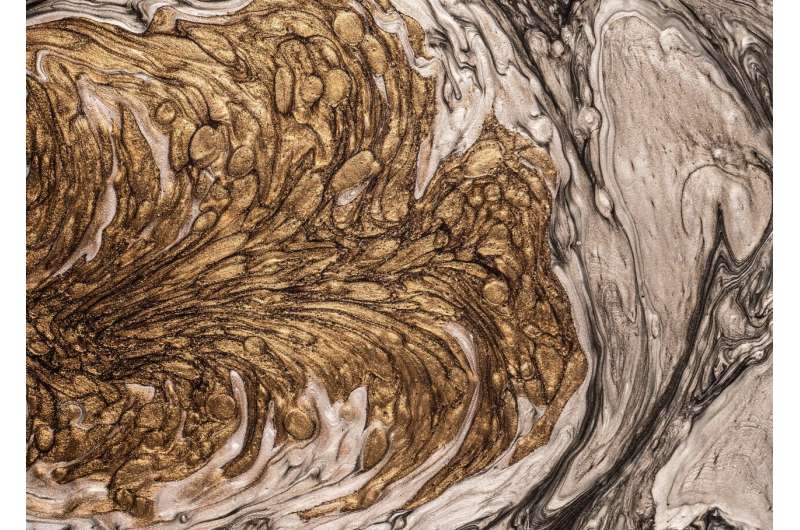This article has been reviewed according to Science X's editorial process and policies. Editors have highlighted the following attributes while ensuring the content's credibility:
fact-checked
peer-reviewed publication
trusted source
proofread
New research finds stress and strain changes metal electronic structure

New research from the University of Birmingham shows that the electronic structure of metals can strongly affect their mechanical properties.
The research
, published in the journal Science, demonstrates experimentally, for the first time, that the electronic and
Dr. Clifford Hicks, Reader in Condensed Matter Physics, who worked on the study said, "Mechanical properties are typically described in terms of the bonding between atoms, while electronic properties of metals are described by states that extend across many atoms."
"The atomic lattice (the term used to describe the arrangement of atoms) of a metal and its mechanical properties are generally thought of as being unaffected by which electronic states are occupied and which are empty, but in this work, we show that this is not always a good assumption."
The researchers from the University of Birmingham and the Max Planck Institute for Chemical Physics of Solids (in Dresden, Germany) conducted experiments on the superconducting metal strontium ruthenate (Sr2RuO4).
By measuring lattice distortion as a function of applied stress, the team found that when Sr2RuO4 is compressed by about 0.5%, a measure of mechanical stiffness known as the Young's modulus decreases by about 10%, and then increases by about 20% when the material is compressed further. This change corresponds to a new set of electronic states becoming occupied, at a transition that had been identified earlier through electronic but not mechanical measurements.
Dr. Hicks said, "While it is completely standard to measure stress-strain relationships in mechanical engineering, it is not something that has been done to study electronic properties. This is because the metals that have interesting electronic properties tend to be brittle, making it hard to apply large forces. Also, large strains are typically required to meaningfully alter electronic properties. In this experiment, samples of Sr2RuO4 were compressed by up to 1%. To visualize that, imagine taking a meter-stick made of granite, and squeezing it until it is 99 cm long."
To overcome these hurdles, the scientists had to build new instrumentation which could measure small and delicate samples, and handle cryogenic temperatures, as electronic measurements are more accurate at lower temperatures. This took five years of planning and design.
This research is the first of its kind. Now that this experiment has been completed on one material, the scientists are keen to conduct similar measurements on other metals. A version of the machine developed for this project is manufactured by a U.K.-based engineering company, and as the apparatus is further developed it may find application in the study of high-strength alloys.
This project provides an example of how curiosity-driven, fundamental research can lead to new technology with practical applications.
More information: H. M. L. Noad et al, Giant lattice softening at a Lifshitz transition in Sr2RuO4, Science (2023). DOI: 10.1126/science.adf3348. www.science.org/doi/10.1126/science.adf3348
Journal information: Science
Provided by University of Birmingham




















